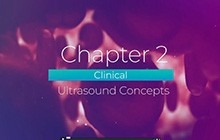Vascular Lower Extremity BachelorClass
With the Vascular Lower Extremity BachelorClass you will gain a strong foundation and comprehensive introduction to performing and interpreting vascular ultrasound examinations.
You will be trained to translate 3D anatomy to 2D images with emphasis placed on a thorough understanding of the principles underlying the Doppler examination and clinical applications using Color Doppler and Spectral Doppler techniques. Learn to identify normal venous and arterial anatomy during peripheral lower extremity ultrasound imaging while demonstrating the confidence to in- corporate protocols, techniques & interpretation criteria to improve diagnostic and treatment accuracy in your practice. You will also learn about the relations between acoustic principles, haemodynamics, and the sonographic representation of major vessels and blood flow.
The Vascular Lower Extremity BachelorClass covers multiple indications that may be present in your patients’ examination, such as cardiac output, dehydration and infection, which can all affect the vascular system in different ways and aggravate existing conditions. All of this knowledge will be made practical and easy to follow with several case studies to ensure a strong foundational understanding of a wide range of vascular conditions.











